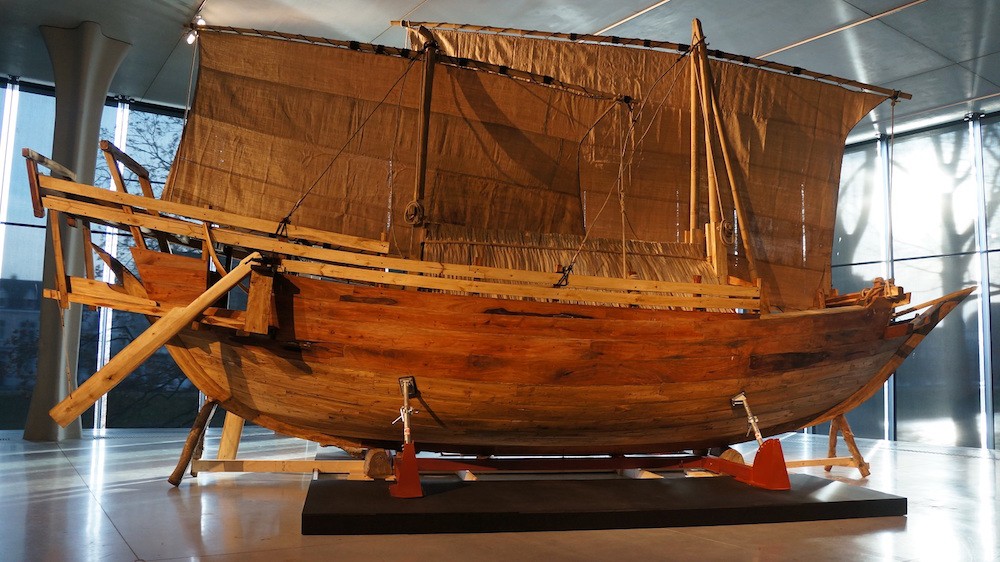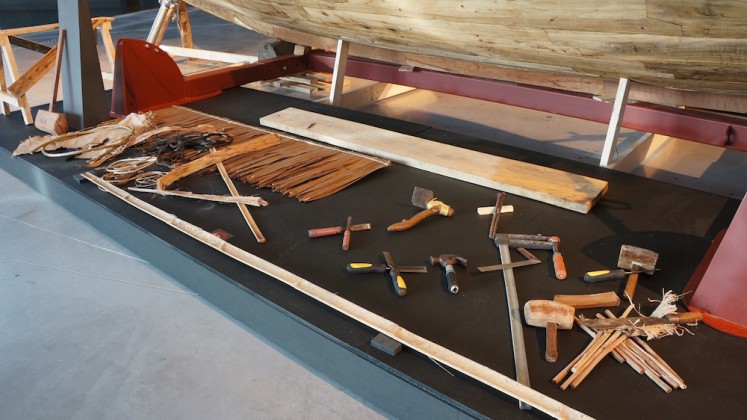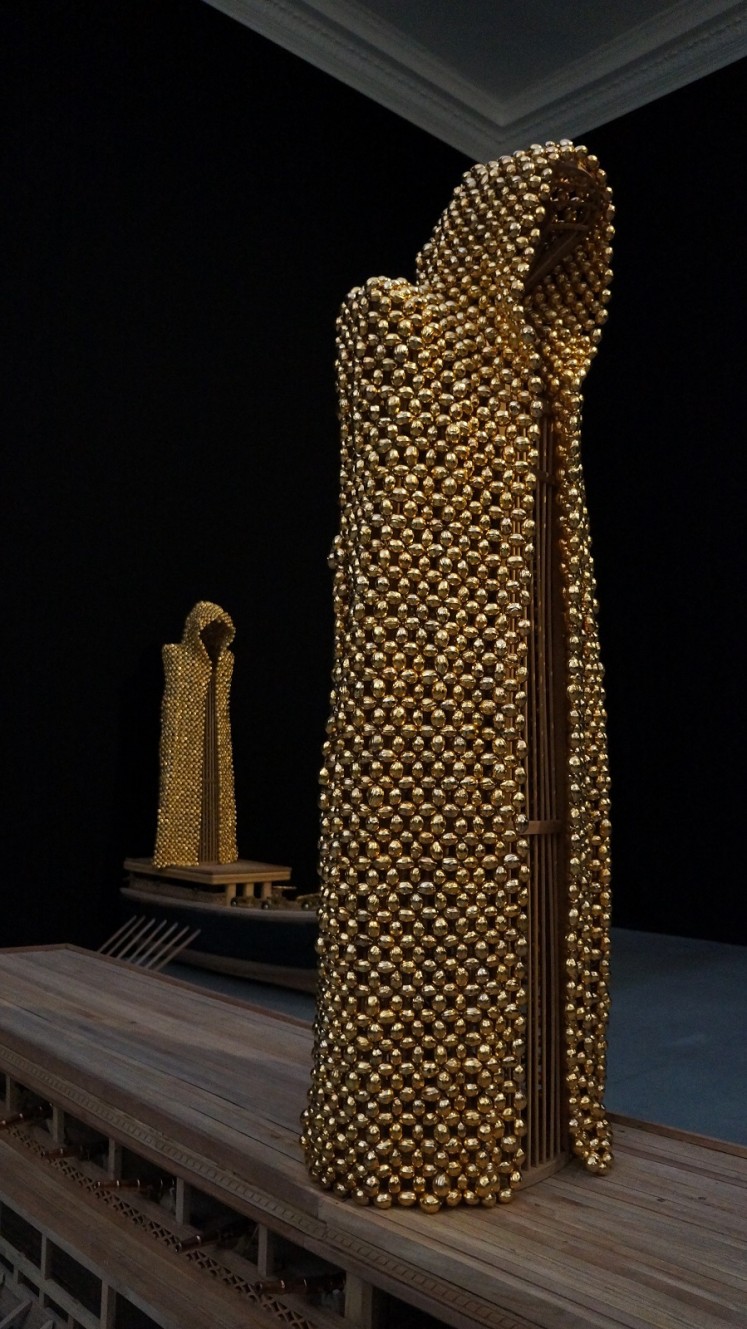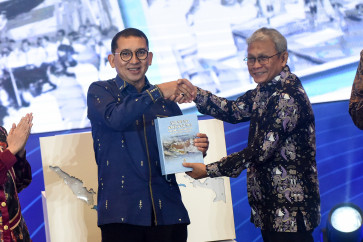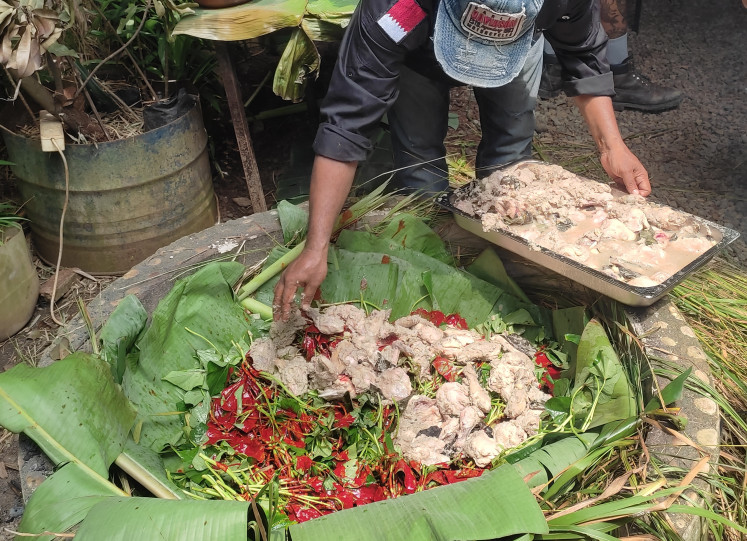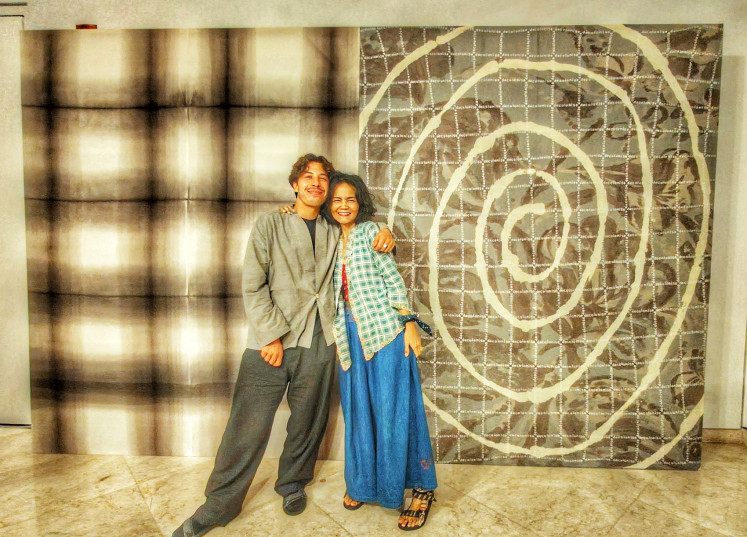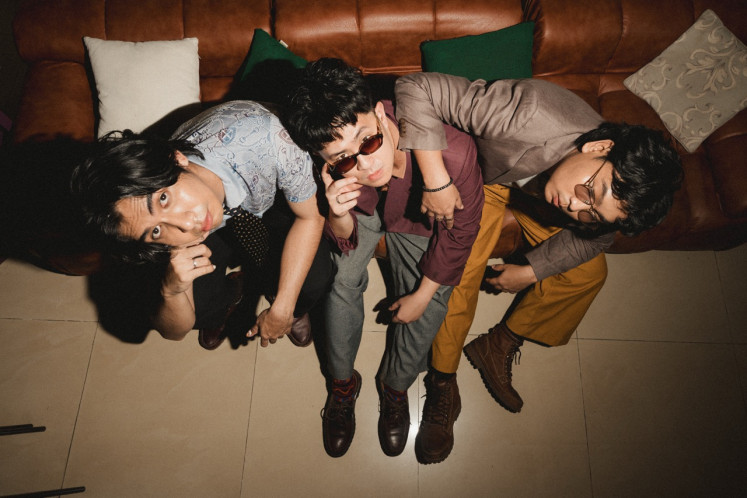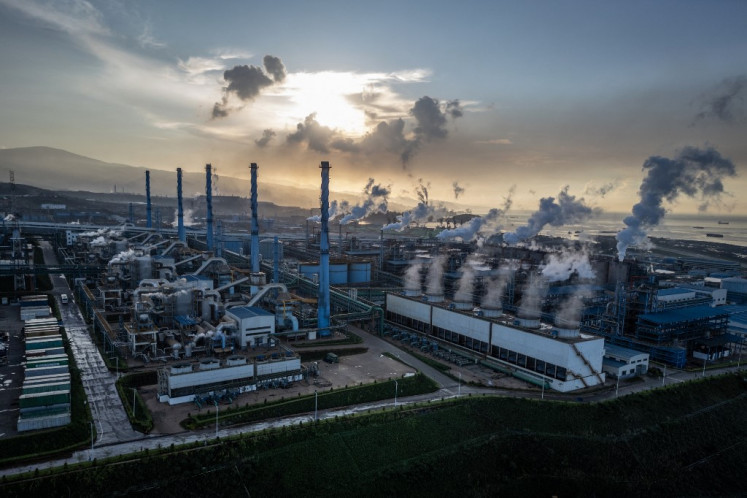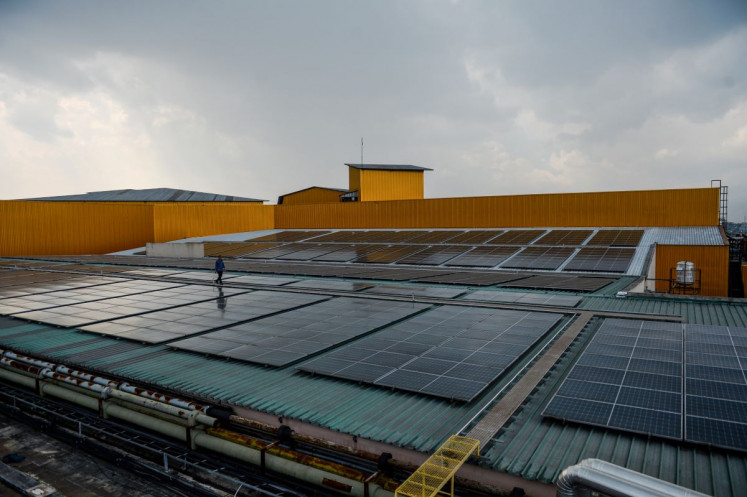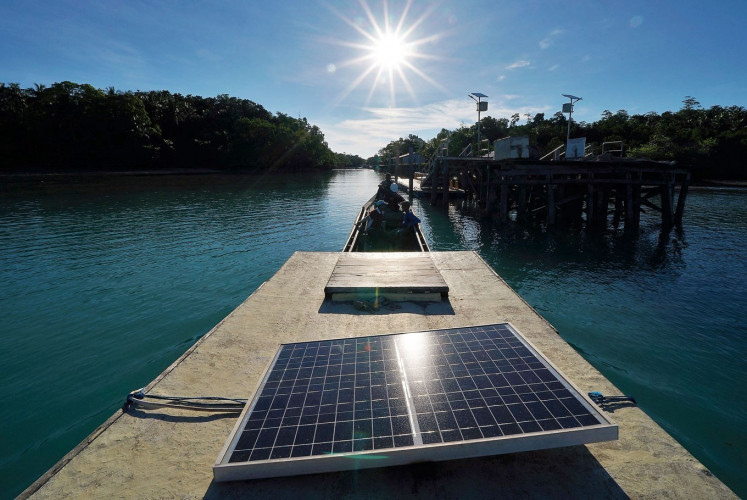Popular Reads
Top Results
Can't find what you're looking for?
View all search resultsPopular Reads
Top Results
Can't find what you're looking for?
View all search resultsLiege exhibition highlights 'padewakan' ship from South Sulawesi
Change text size
Gift Premium Articles
to Anyone
T
he 12-meter-long and 3-m-wide padewakan (traditional Indonesian boat) becomes an extraordinary icon in an exhibition called “Kingdoms of the Sea” in La Boverie, Liege, Belgium.
On display from Oct. 25 to Jan. 21, the exhibition, which is part of Europalia Art Festival Indonesia, highlights the intrinsic relationship between Indonesia and the sea, displaying more than 250 of the archipelago’s national treasures within a 2,500-sq-m space. Some of the items are on loan from the National Museum of Indonesia and have never been showcased outside the country.
The padewakan was constructed by four locals of Bulukumba regency in South Sulawesi over three months. It was then dismantled, transported and reassembled in the museum.
The origin of the name is unknown, but it is said to refer to the island of Dewakang, a major landmark on the course from Sulawesi to Java, while others say it derives from the root word waka or wangka, an Austronesian word for "ship" or "boat".
Read also: First exhibition for Indonesian comics history held in Brussels
Said to be the ancestor of the phinisi (a more popular Indonesian traditional two-masted sailing ship), the padewakan is an important piece of Austronesian civilization, whose people turned toward the sea and learned to build vessels to fulfill their basic needs as well as explore the waters. Interestingly, it uses the same type of sails and rigging as the vessels at the 9th century Borobudur temple.
The ship is uniquely built starting from the edgings (the boards that make up the hull). The ribs that form the framework are then inserted in order to strengthen the ship. Meanwhile, cords are fixed along the edgings to maintain vertical pressure, thus avoiding a lateral shearing effect. No metal elements were used in the construction of the hull, yet the ships are robust and flexible even while traveling through rough waters.
The tools used to build the "padewakan." (JP/Keshie Hernitaningtyas)Though the size of the exhibition hall restricted the ship’s final size, the builders stated that the vessel is estimated to be able to carry around 10 to 12 metric tons – enough to earn a living for a small merchant sailor's family, and just around the carrying capacity of a vessel of its kind mentioned in records of the 8th century.
Named paduwakang by the Makassarese, the ship is said to have shown up in Dutch records as the most popular type among Sulawesi sailors since at least early the 18th century. But such a vessel was also used among the Dutch East India Company and European residents.
Read also: Indonesian writers share thoughts on Islamic diversity in Brussels
According to the head builder, M. Ali Jafar, the ship in the exhibition, which attracts at least 400 visitors per day, is a male and is named Sugi Manaik. “If the ship is used for trading, it will bring success and long life,” one of Ali’s sons, Muhammad Ali Jafar, who came to Liege to help construct the ship, said during a video conference on Wednesday.
“The ship was built without any blueprint, using only what we remember. The padewakan was made based on a design we made back in 1987,” he added. “If this ship were to sail, it could survive up to 20 years.”
The nutmeg robe created by Indonesian designer Titarubi. (JP/Keshie Hernitaningtyas)Another highlight of the exhibition is “Hallucinogenic,” a robe made of 8000 gold-coated nutmegs created by Indonesian designer Titarubi. It was previously displayed in the Banda, Warisan untuk Dunia (Banda, the Legacy for the World) exhibition as part of the 350th anniversary celebration of the Banda Treaty, held on Sept. 20 to Oct. 4 at the National Gallery of Indonesia in Jakarta. The robe was reportedly created by 40 people over around four months. (asw)

